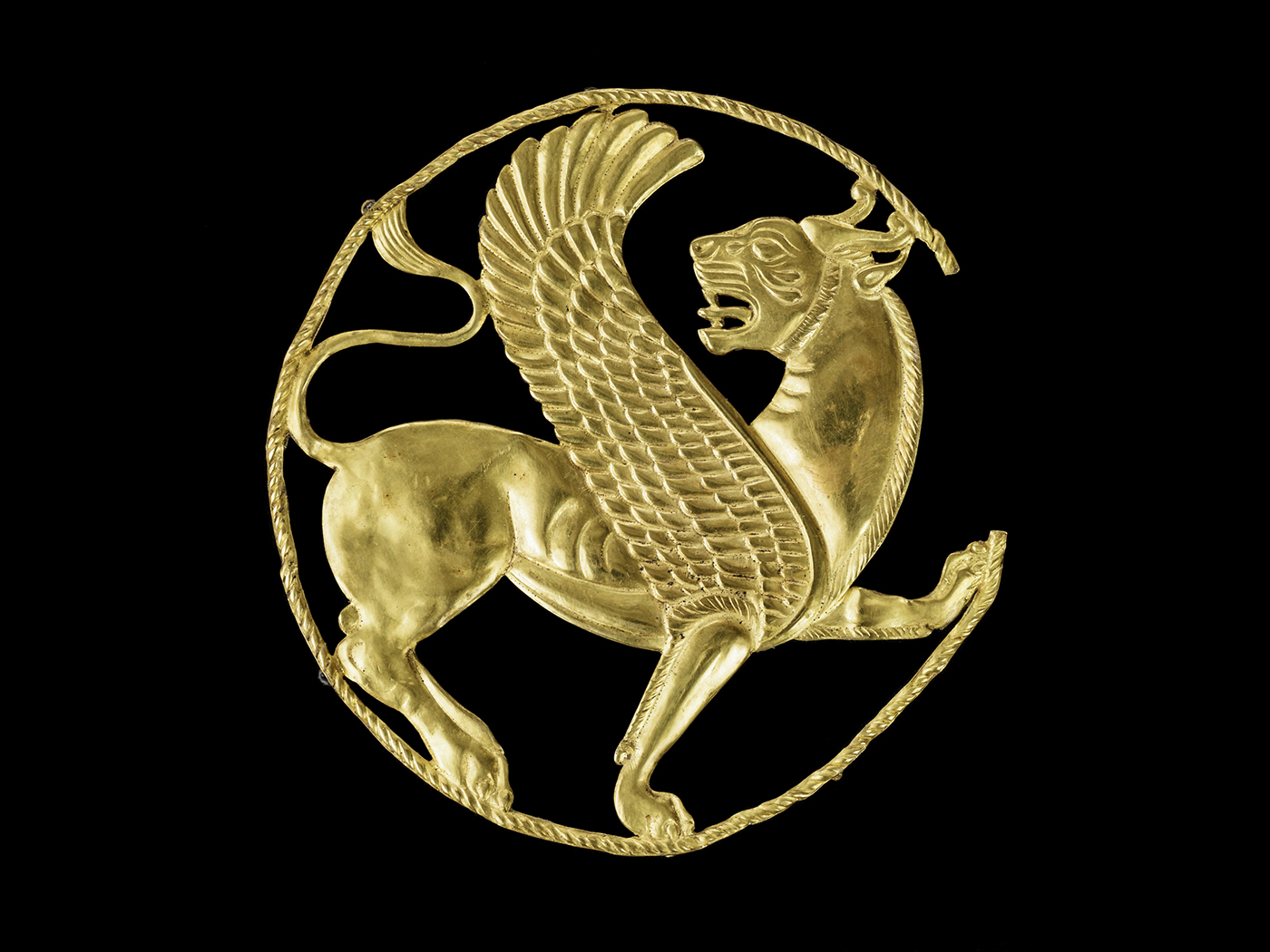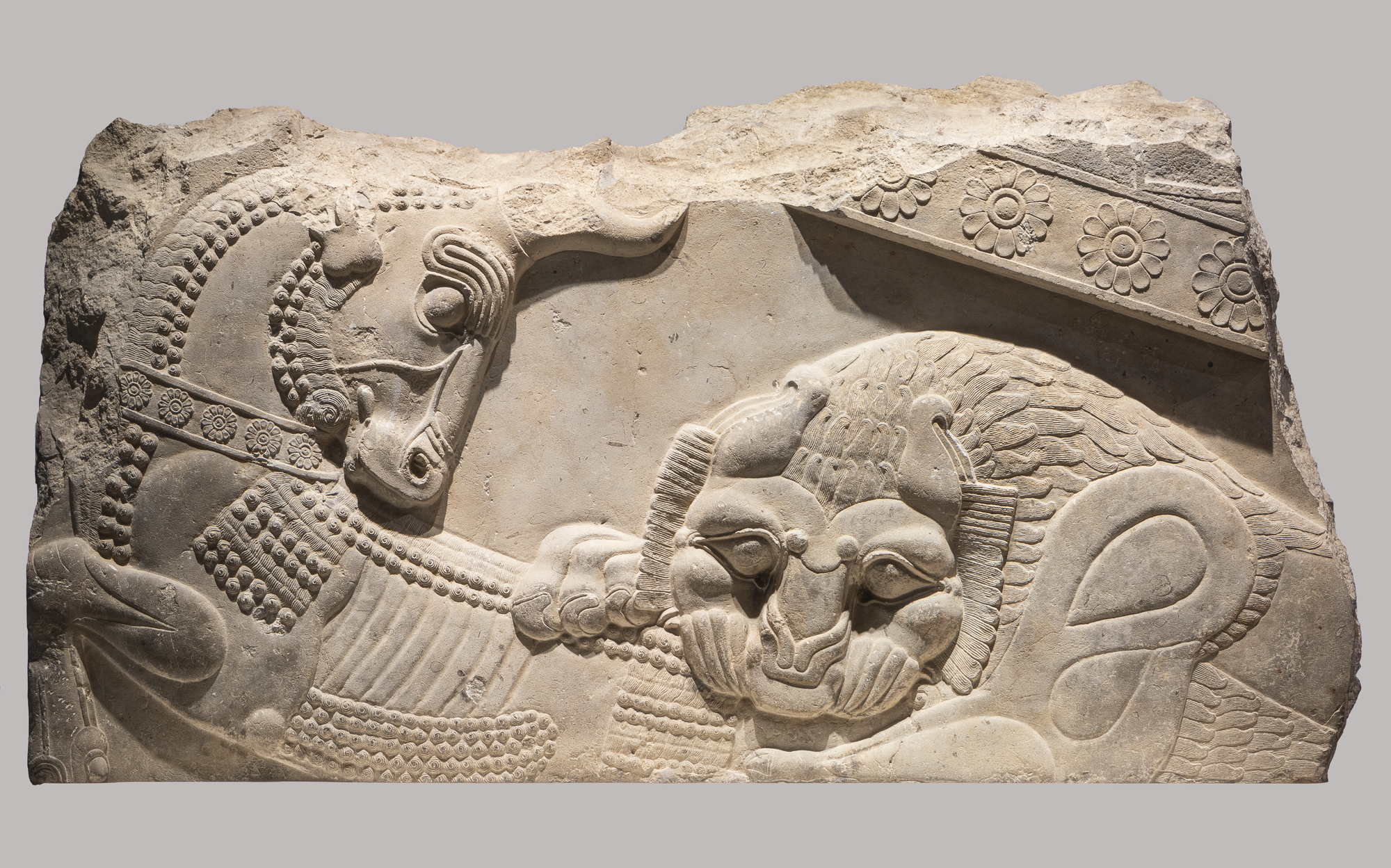In the Classical World, Persia's Powers Rivaled Greece and Rome
An exhibition at the Getty Villa in Los Angeles shows how ancient Iran held its own against its better-known contemporaries
Elizabeth Djinis
Daily Correspondent
May 2, 2022

A gold Achaemenid plaque featuring a winged lion-griffin, dated to between 500 and 330 B.C.E. Courtesy of the Oriental Institute of the University of Chicago
Who were the power players in the interconnected classical world? Ancient Greece and Rome likely come to mind. But a new exhibition at the Getty Villa in Los Angeles aims to put another superpower back in the picture: ancient Persia, in what is now Iran.
The Persian Empire spanned roughly 550 B.C.E. to 650 C.E. and saw three primary dynasties in that time: the Achaemenid, Parthian and Sasanian. As the “dominant nation of western Asia for over a millennium,” according to the exhibition website, ancient Iran both influenced and was influenced by the traditions of Greece and Rome.
“[A]fter Egypt, Persia is the nation that had the most profound and sustained influence and impact on the classical world,” Timothy Potts, the museum’s director, tells Getty magazine’s Erin Migdol.

Achaemenid relief with a lion and bull in combat, dated to between 359 and 338 B.C.E. Courtesy of the Oriental Institute of the University of Chicago / Photo by Michael Tropea
“Persia: Ancient Iran and the Classical World” is organized by each consecutive dynasty. Per a statement, the show features royal sculpted reliefs and precious metal vessels meant for ceremonial use at banquets and often gifted by courtiers, among other objects on loan from museums across the United States, Europe and the Middle East.
More:
https://www.smithsonianmag.com/smart-news/in-the-classical-world-persias-powers-rivaled-greece-and-rome-180980008/

